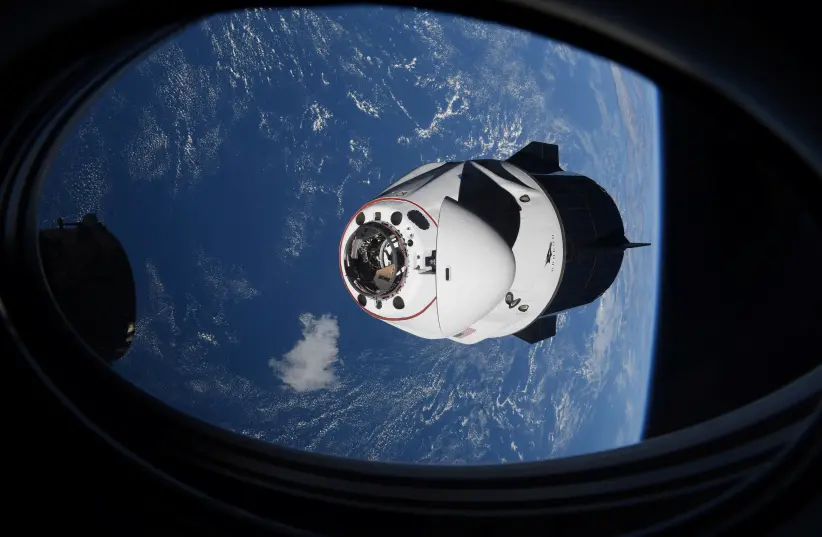Space
NASA SpaceX Endeavour broken toilets forces astronauts to use diapers

NASA’s SpaceX Crew-2 mission is set to make its return this week after it detaches from the International Space Station, but its crew will be experiencing some discomfort.
Due to a broken toilet on board the Crew Dragon spacecraft named the Endeavour, the NASA astronauts will have to return in diapers, the Associated Press reported.
“Spaceflight is full of lots of little challenges,” NASA astronaut Megan McArthur explained regarding the “suboptimal” but manageable situation in a Friday news conference, AP reported. “This is just one more that we’ll encounter and take care of in our mission. So we’re not too worried about it.”
The fact that astronauts will be forced to wear a diaper during the approximately 20-hour trip may be irritating for them, but it is nothing new in the field of space travel.
Logistical issues in spacecraft have traditionally made using the bathroom difficult. This was made evident back in 1961, when Alan Shepard was set to be the first person in space and realized, hours into waiting for his spacecraft to launch, that he needed to pee, and had to be given the all-clear by mission control to go in his spacesuit. There were legitimate fears at the time regarding this endeavor, as some were concerned this could have caused some of the equipment to short, but this did not end up being a problem.
Since then, NASA used a special device made by the B.F. Goodrich company and integrated it into the suit itself to adequately collect waste, which was ready in time for the next space mission later that year.
But the importance of a means for helping astronauts find a way to pee is more than just fodder for toilet humor, as the effects of space travel have a noticeable impact on the human bladder.
This was especially noted in 1962 with astronaut John Glenn. During his mission, he used his urinary collection device just once, according to the Smithsonian Magazine. However, he managed to fill the device with 27 ounces of urine. For comparison, the human bladder is physically incapable of holding more than 20 ounces of urine.
How does this happen?
As noted by author Mary Roach in her book Packing for Mars: the Curious Science of Life in the Void, zero gravity in space means that when urine flows into the bladder, it doesn’t collect on the bottom as it normally would. Rather, it floats. As such, the body’s “warning signs” are not triggered in the way they usually are.
“Only when the bladder is almost completely full do the sides begin to stretch and trigger the urge,” she wrote. “And by then the bladder may be so full that it’s pressing the urethra shut.”
Over time, the technology involved has become more sophisticated, but it seems that for this return flight, the astronauts of NASA’s SpaceX Crew-2 mission will have to go a bit low-tech with diapers.
The Endeavour is slated to undock from the International Space Station at 1:05 p.m. EST on Sunday and will see the crew, made up of NASA, Japan Aerospace Exploration Agency (JAXA) and European Space Agency (ESA) astronauts finish 199 days spent in space. The spacecraft will maneuver to photograph the space station’s exterior and then head for Earth, splashing down in one of seven pre-targeted landing zones in the Atlantic, Gulf of Mexico or Florida coast.
Their replacements in the space station will be launched as part of NASA’s SpaceX Crew-3 mission, set to leave no later than late Wednesday night.

-

 News2 years ago
News2 years agoDr. Naval Parikh: Hypertension Types, Causes, Symptoms & Treatment
-

 News2 years ago
News2 years agoDr. Naval Parikh: Allergy Types, Causes, Symptoms & Treatment
-

 Celebrity4 years ago
Celebrity4 years agoYoung Irish Star Signs to DJ John Gibbons’ label
-

 News2 years ago
News2 years agoDr. Naval Parikh: Asthma Causes, Symptoms and Treatment Options
-

 News3 years ago
News3 years ago8 Best Sites Like VIPLeague to Watch Free Sports in 2021
-

 News1 year ago
News1 year agoTinyZone: WatchFree Movies Online
-

 News2 years ago
News2 years agoTampa Van Hire
-

 Uncategorized2 years ago
Uncategorized2 years agoInstagram’s Most Popular Product Niche

